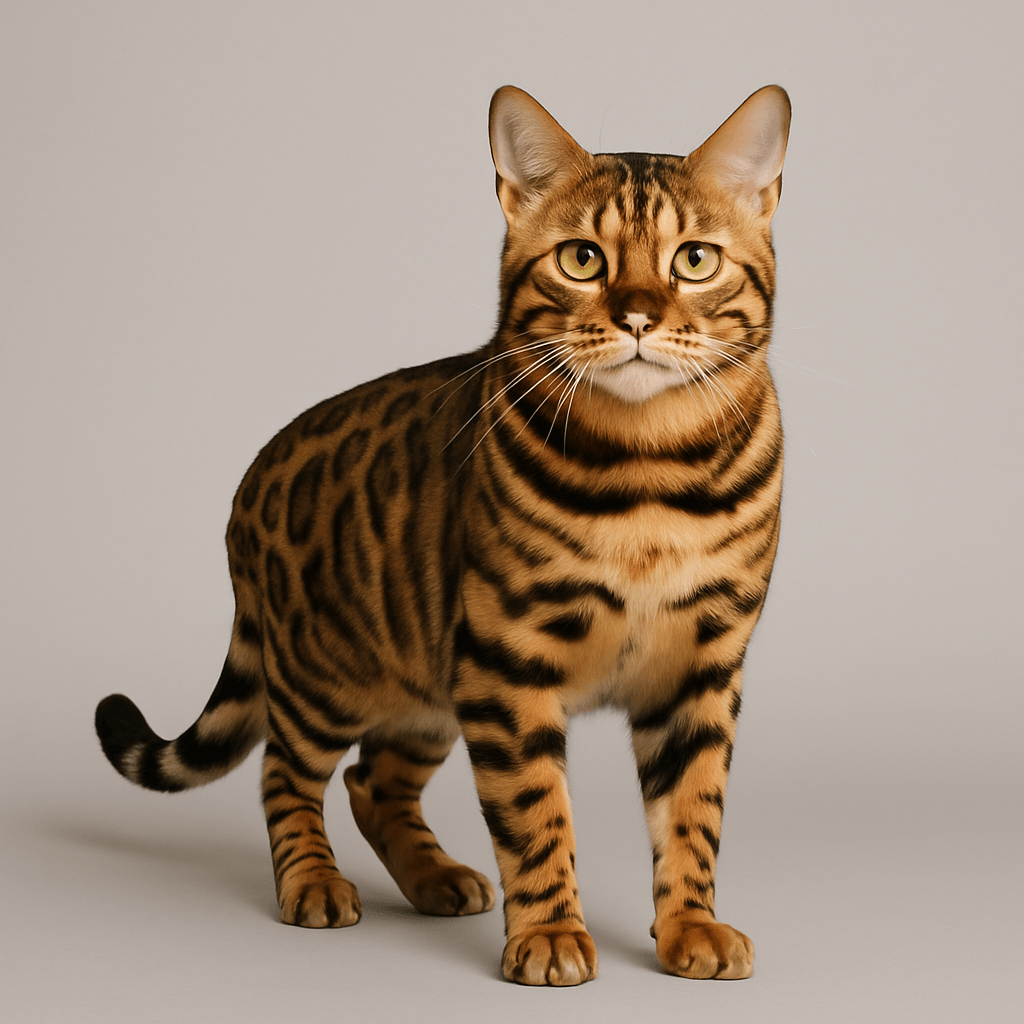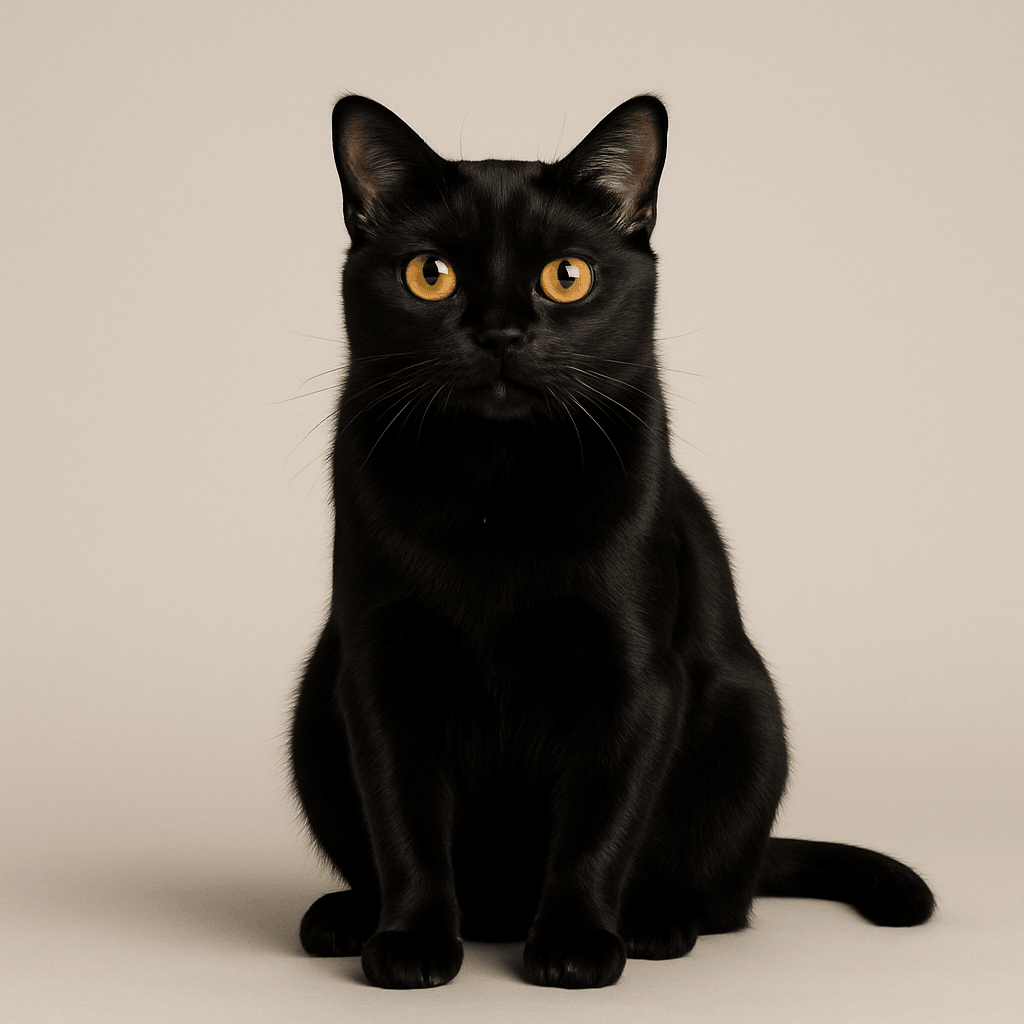
🐆 Bengal cat – a wild spirit in a homely version
📜 Origin and history of the breed
The Bengal cat is a fascinating combination of a wild appearance and a friendly temperament. The breed originated in the United States in the 1960s by crossing a domestic cat with an Asian leopard cat (Prionailurus bengalensis), a small wild cat native to Asia.
The first attempts at crossbreeding aimed to create a cat with an exotic appearance that would also be a safe and sociable family pet. The greatest breakthrough came thanks to Jean Mill, an American breeder who consistently developed the Bengal line, ensuring its health and gentle nature. Her work gave rise to one of the most recognizable and valued cat breeds in the world.
🧠 Character and temperament
The Bengal cat is a quicksilver in its spotted skin. Intelligent, energetic, and full of life, it surprises with its sociability and extraordinary ability to bond with people.
It is characterized by:
-
high intelligence – learns quickly, can open doors, remembers commands and recognizes the emotions of its owner;
-
extremely active – needs exercise, play and stimulation – this is not a cat for a homebody;
-
playful nature – loves running, climbing, fetching and water (!);
-
strong attachment – although independent, he loves being close to his guardian and often accompanies him like a dog.
Perfect for active families, singles with plenty of time on their hands, or… the sporty cat!
📏 Appearance and special features
The Bengal looks like a miniature panther – wild, agile, with a mesmerizing gaze. But its ferocity is only a facade – beneath its spotted fur lies a true family friend.
-
Figure : slim, muscular, athletic;
-
Head : broad, slightly wedge-shaped;
-
Ears : medium, with rounded tips;
-
Eyes : large, intense, often green or amber in color;
-
Coat : short, thick, incredibly shiny – often with a glitter effect (!);
-
Color : the most characteristic – spotted (rosettes like a leopard) or marble.
The Bengal not only looks like a wild cat – it also moves with the same grace and precision.
🩺 Health and prevention
The Bengal cat is generally a healthy breed, but like any pet, it requires responsible care and preventative care.
Most common problems:
-
intestinal problems – Bengals may have a sensitive digestive system;
-
hypertrophic cardiomyopathy (HCM) – regular heart tests recommended;
-
food allergies – especially to plant proteins and low-quality food.
Prevention:
-
balanced high-meat diet;
-
daily portion of physical and mental activity;
-
regular veterinary check-ups and preventive examinations;
-
taking care of the home environment – a Bengal needs scratching posts, shelves, toys and space to explore.
🛁 Care
Fortunately, caring for a Bengal is not particularly difficult.
-
combing : once a week – mainly for pleasure and to strengthen relationships;
-
Baths : Bengals often… like them! Baths can be given, but in moderation and only with gentle shampoos;
-
eyes and ears : check and wash as necessary;
-
claws : trim every 2–3 weeks.
🧠 Training and fun
The Bengal is a cat that… loves to be trained. He's an excellent candidate for clicker training, fetch, and obstacle courses.
-
interactive toys : treat mazes, treat balls, puzzles for cats;
-
fishing rods and tunnels : ideal for hunting and chasing;
-
obstacle course at home : shelves, bridges, hammocks – a paradise for a Bengali explorer;
-
Water : Many Bengals love fountains and even… playing in the bathtub!
🏡 Bengal cat at home
This breed requires space, activity, and attention. The Bengal is not a couch potato—it's a cat that wants to be a part of its owner's daily routine.
With children – a fantastic playmate. With dogs – they often get along well if the dog respects their space. With other cats – depending on their temperament, but they feel best in the company of an equally active companion.
If you provide it with activities, attention and exercise, it will reward you with love and a daily dose of fascinating wildlife in your home.
💤 The perfect place to sleep
After a long day of chasing and climbing, your Bengal deserves some relaxation. The Osaka Fluffy bed is a great choice – soft, cozy, and safe. The Petto blanket, on the other hand, is perfect for naps – on a windowsill, in an armchair, or even in a carrier.




 https://petto.com.pl/
https://petto.com.pl/